Art Basel Features: 'Recently Discovered Ruins of a Dream'
Messe Basel, Basel
Colette Lumiere
Jun12–Jun182023
"At the core of Colette’s work is a nomadic principle, an openness to any media, materials or cultural network as a means of circulating images or ideas; her art reflects an enduring concern to speak to multiple audiences, large and small, elite and mass culture.” - Jonathan Crary, Arts Magazine, 1983
For the 2023 iteration of Art Basel, Company Gallery is thrilled to present Recently Discovered Ruins of a Dream, a “minimal baroque” (Colette, 73’) solo presentation by seminal artist Colette Lumiere. The booth brings together fragments of the artist’s early environments from the 1970’s and early 80’s, lifting these historical works to a new stage of existence.
Colette is a pioneering artist whose vast and enduring body of work has both innovated and defied the categories of installation, performance, photography, and painting from the early 1970s through the present. Moving fluidly between the public sphere and her own private space, Colette’s work embraces an unapologetic eroticism and effete femininity that short-circuits feminist politics. Channeling various heroines throughout history in performances and staged photographs, and wearing custom clothing on a daily basis, Colette has created an individual mythology in which the line between art and life were largely indiscernible. She has been known by the personas of Justine (1978–83), Mata Hari and the Stolen Potatoes (1984–86), Countess Reichenbach (1986–91), the House of Olympia (1991-2001), and Lumiere (2001-2020).
For decades, Colette has slept in her unique immersive installations, in an exploration of the boundaries between dreams and reality, art and life, and the realization of impossible desires. In portraying the sleeping reclining female - a subject historically portrayed through the male gaze - Colette portrays herself as both subject and object of her work. In one of her most well known installations, Real Dream, performed at the Clocktower in 1975, Colette lay nude with her eyes closed, nestled within plush silks, surrounded by serene sounds of birds chirping, traffic, and voices. Contrary to most endurance artists of the time, Colette's intention for laying still was not to suffer, but to help induce a state of wonder and magic unto her audience.
For Basel, Company’s presentation spotlights artworks that build upon Colette’s ongoing exploration of sleep as an artistic gesture. This prolific body of work includes lightboxes, costumes, photos, paintings and sculptures that were once an integral part of Colette's legendary Living Environment (1973/1983) where the artist transformed her Lower Manhattan loft into an immersive, ever-evolving installation and inhabited it as a living sculpture. It also features fragments from the artist’s first internationally recognized installation, The transformation of the Sleeping Gypsy without the lion after Rousseau (1973).
Additional works on view are those which were at the 1977 Art Basel with Banco Gallery, where Colette performed within the booth for the duration of the fair, sleeping alongside pieces from the series Postcards from the ‘Story of My Life’. These small works track Colette’s temporal performances through the template of handwritten captions and original 5 x 7 inch photographs. Also included is a large light box resurrected from Justine’s tomb, an installation at PS1 in 1978.
In our 2023 installation, the Colette Mannequin Sculpture created to replace Colette’s live presence (The House of Olympia, 90s’) has now been sculpted in silicone by the artist Cajsa von Zeipel. This uncanny facsimile interprets the artist in one of her classic reclining sleeping poses, adorned with the Colette signature look of ruched fabric, a corset and tousled black locks of hair. Like newly discovered treasures or found relics from a past civilization these pieces come together to give us a glimpse into Colette’s ever evolving unique and significant artistic vision, ultimately offering a new audience a chance to envision and experience the essence of the artist’s early environments.
“There isn’t much of a gap between art and death,” Jeffrey Deitch writes in an essay in Politi monograph on Colette 1981. Colette staged her own death at the Whitney Museum in January 1978, and reemerged a few days later at MoMa PS1 as Justine of the Colette is dead Co. (Reverse Pop Series 78-82)- her first living persona. As Justine, she "posed " as a fashion and interior designer, a rock star as the front woman in the band, Justine & the Victorian Punks, an inventor of products all inspired by Colette 's image, and the executor of Colette's estate. Using shop windows as a framework in order to reach a wider audience, Justine and the Colette is Dead Co. also exposed the contradictions of our culture, specifically in relation to art and commerce. As Justine, the resurrected Colette continued to transform the ordinary while bringing to question the role of the artist in society.
Selected Works

Colette Lumiere
Recently Discovered Ruins of a Dream,
1973-2023
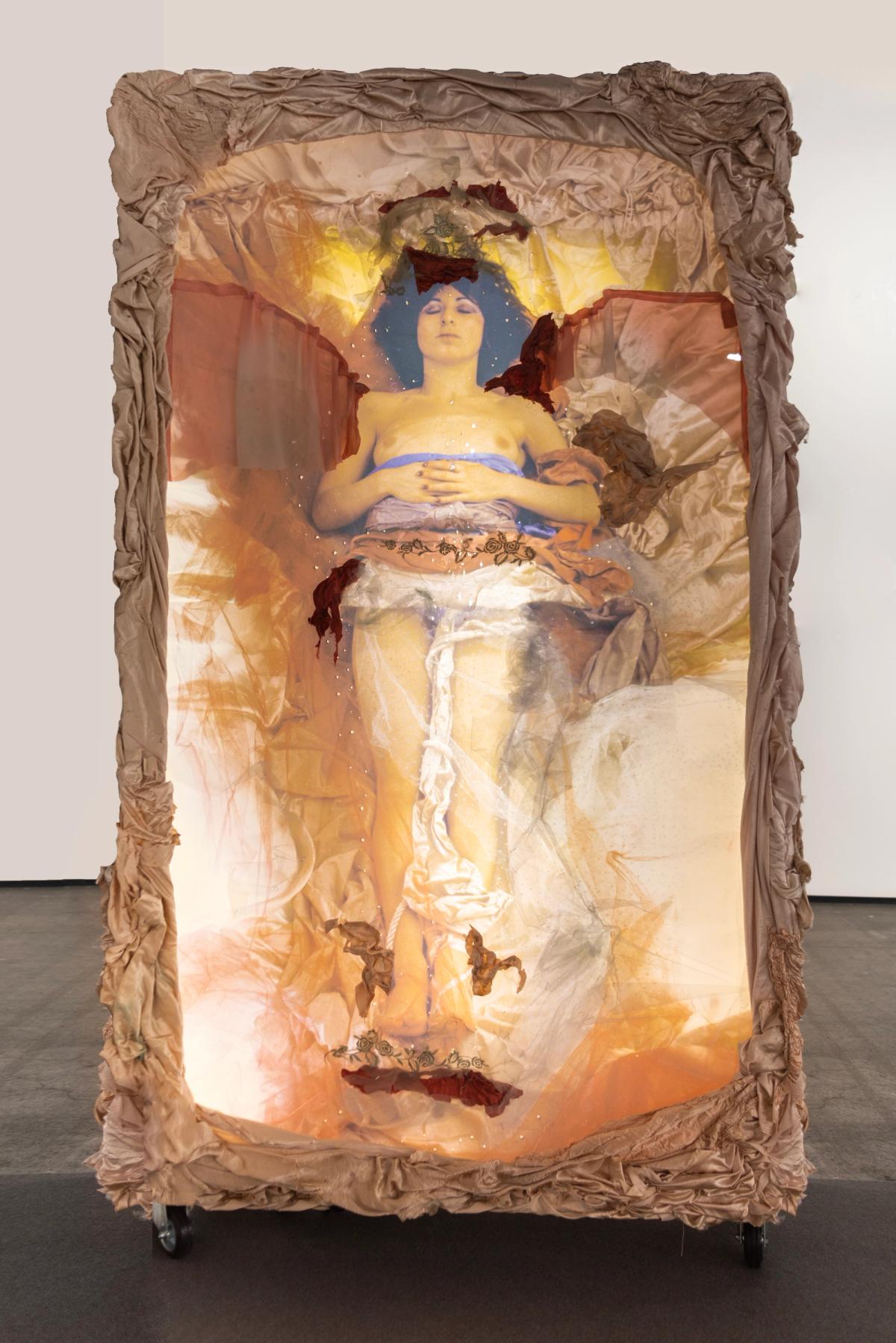
Colette Lumiere
The Messenger,
1978, Reconstruction 2021-2023
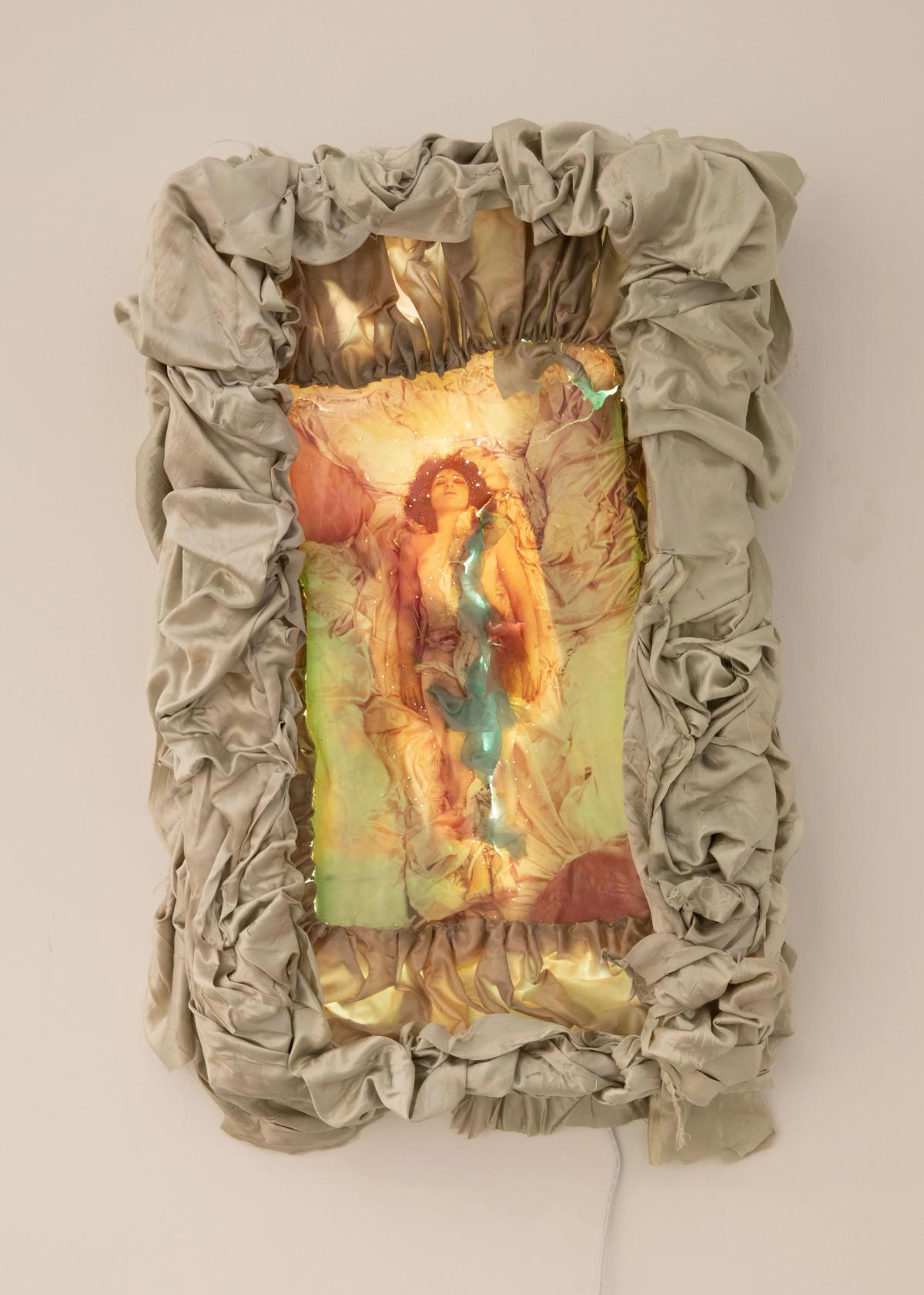
Colette Lumiere
Bed Series II,
1975 - 1976
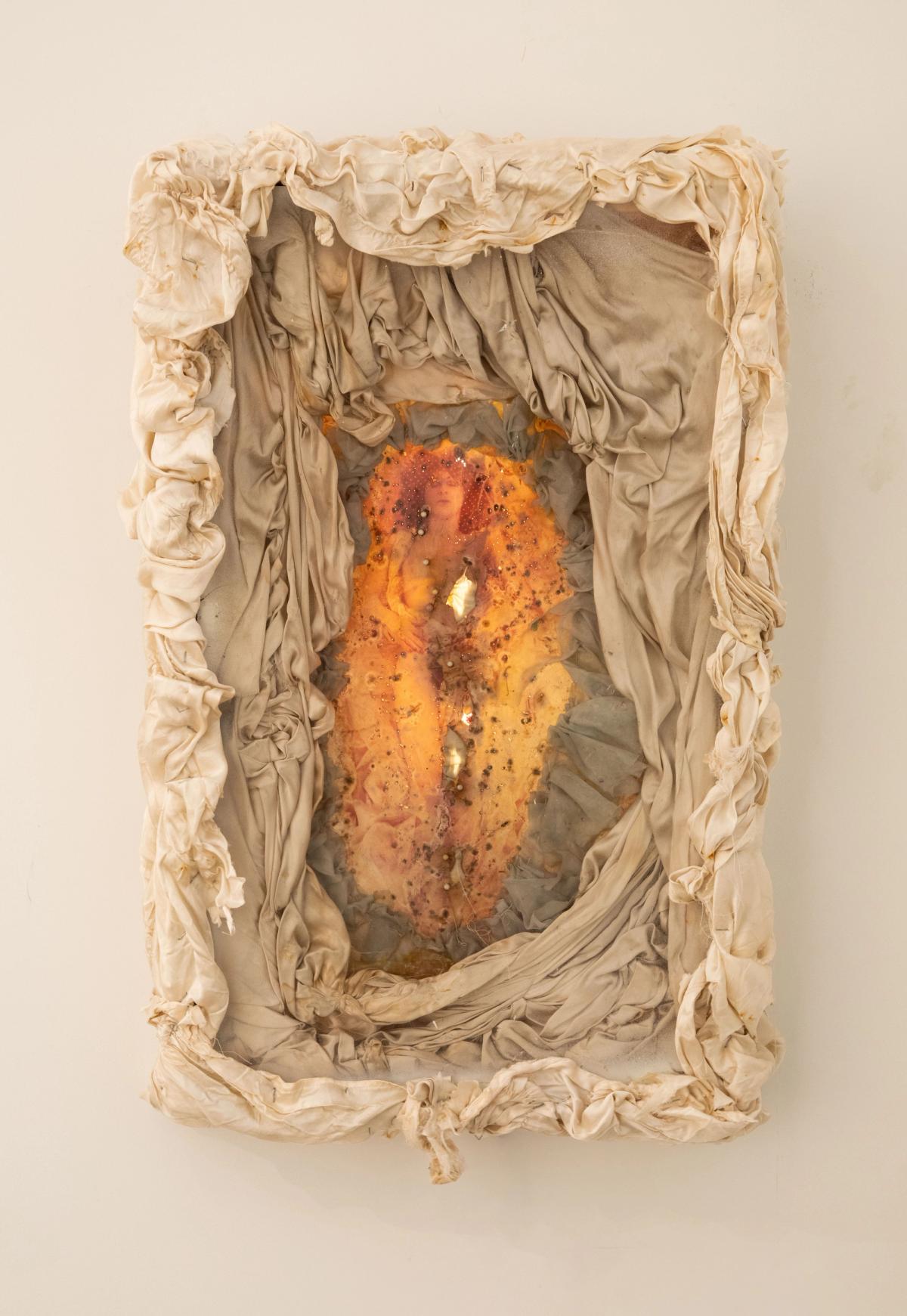
Colette Lumiere
Bed Series II,
1975 - 1976

Colette Lumiere
Off the Wall (As Marat in David's Wraith / PS1 Contemporary Art Center),
1976
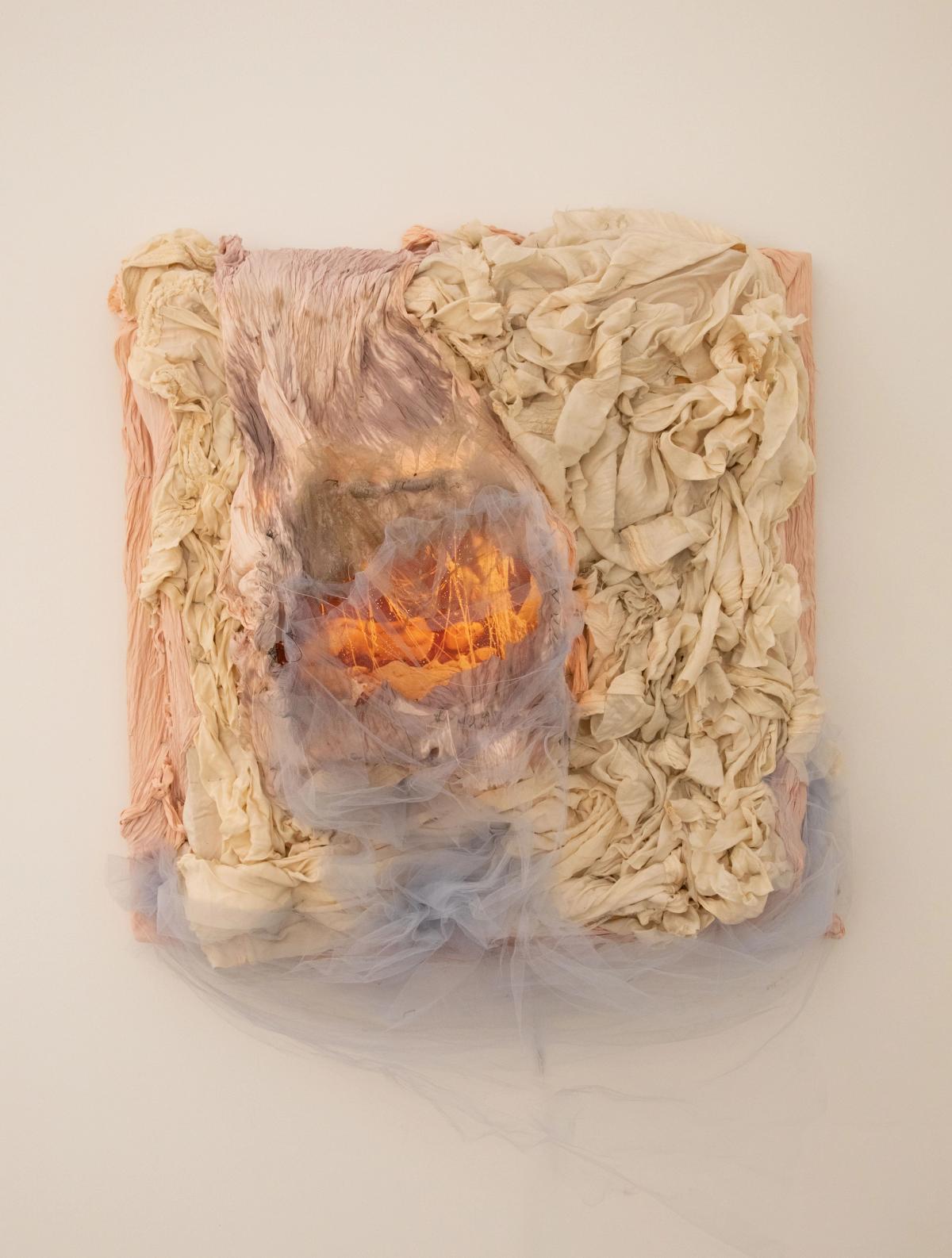
Colette Lumiere
Off the Wall (In Memory of Ophelia and All Those Who Died of Love and Madness / Akademie der Künste) ,
1976
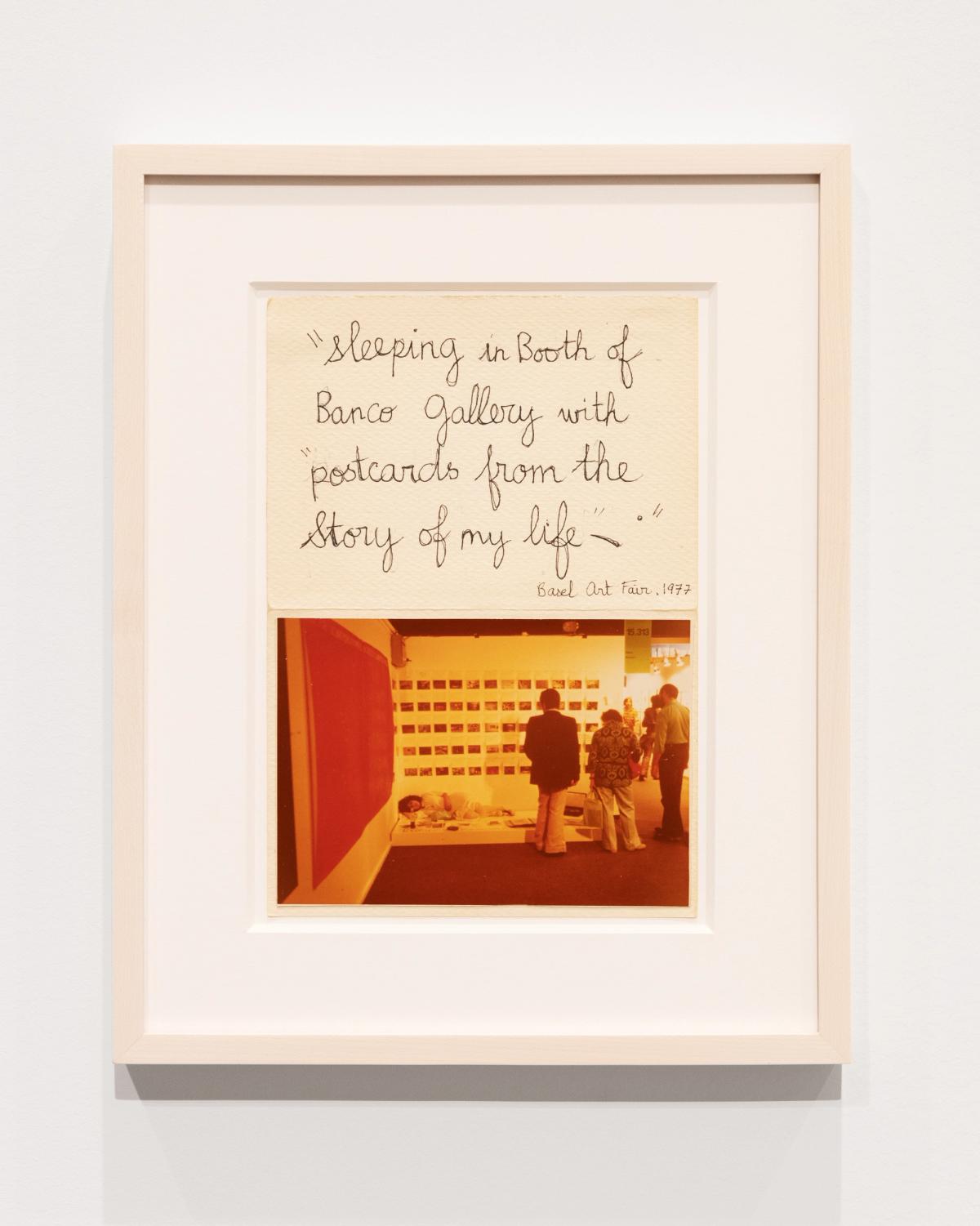
Colette Lumiere
Sleeping in Booth of Banco Gallery (Postcards of The Story of My Life),
1977
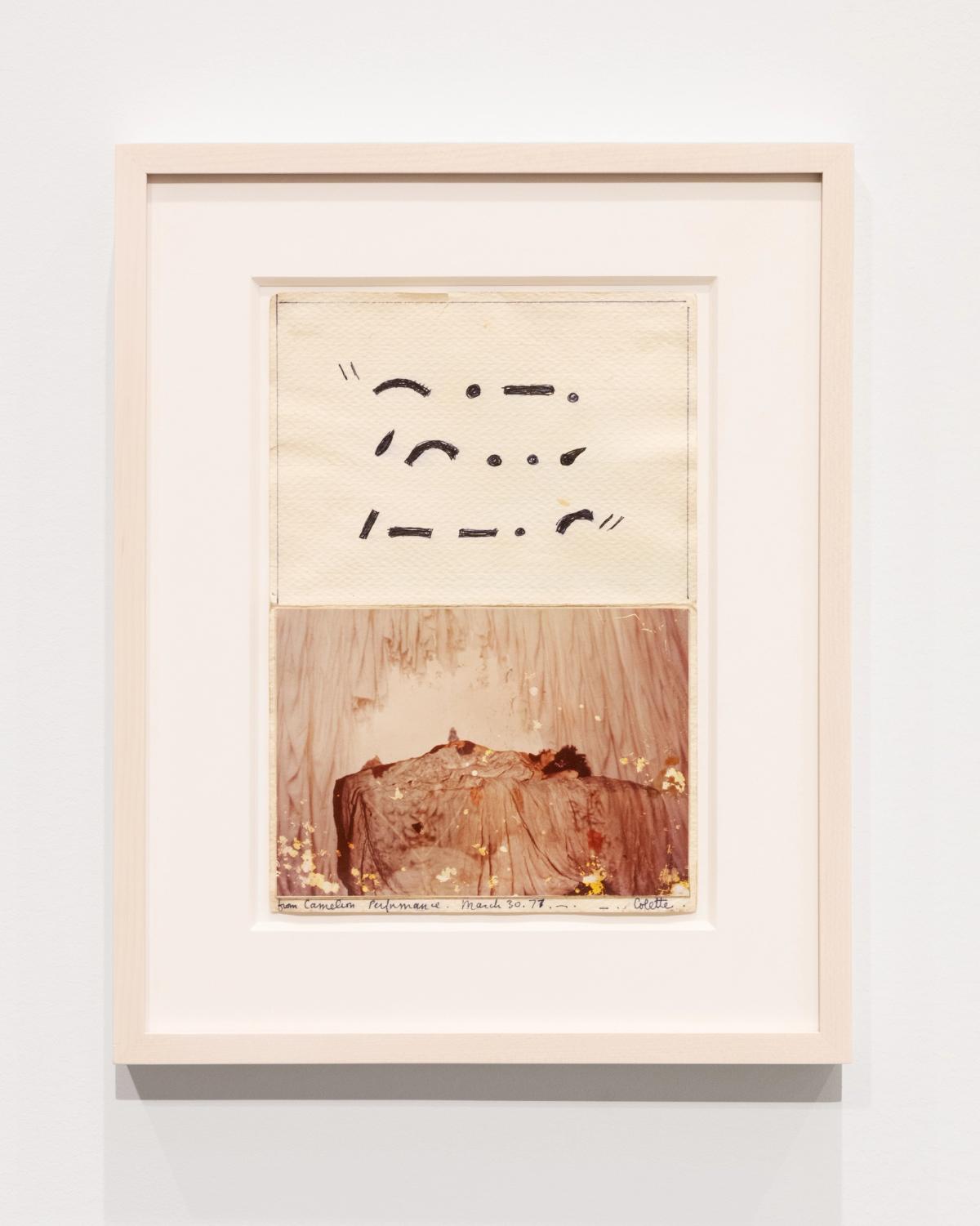
Colette Lumiere
Performance for Lecture / Institute of Architecture, New York (Postcards of The Story of My Life),
1977
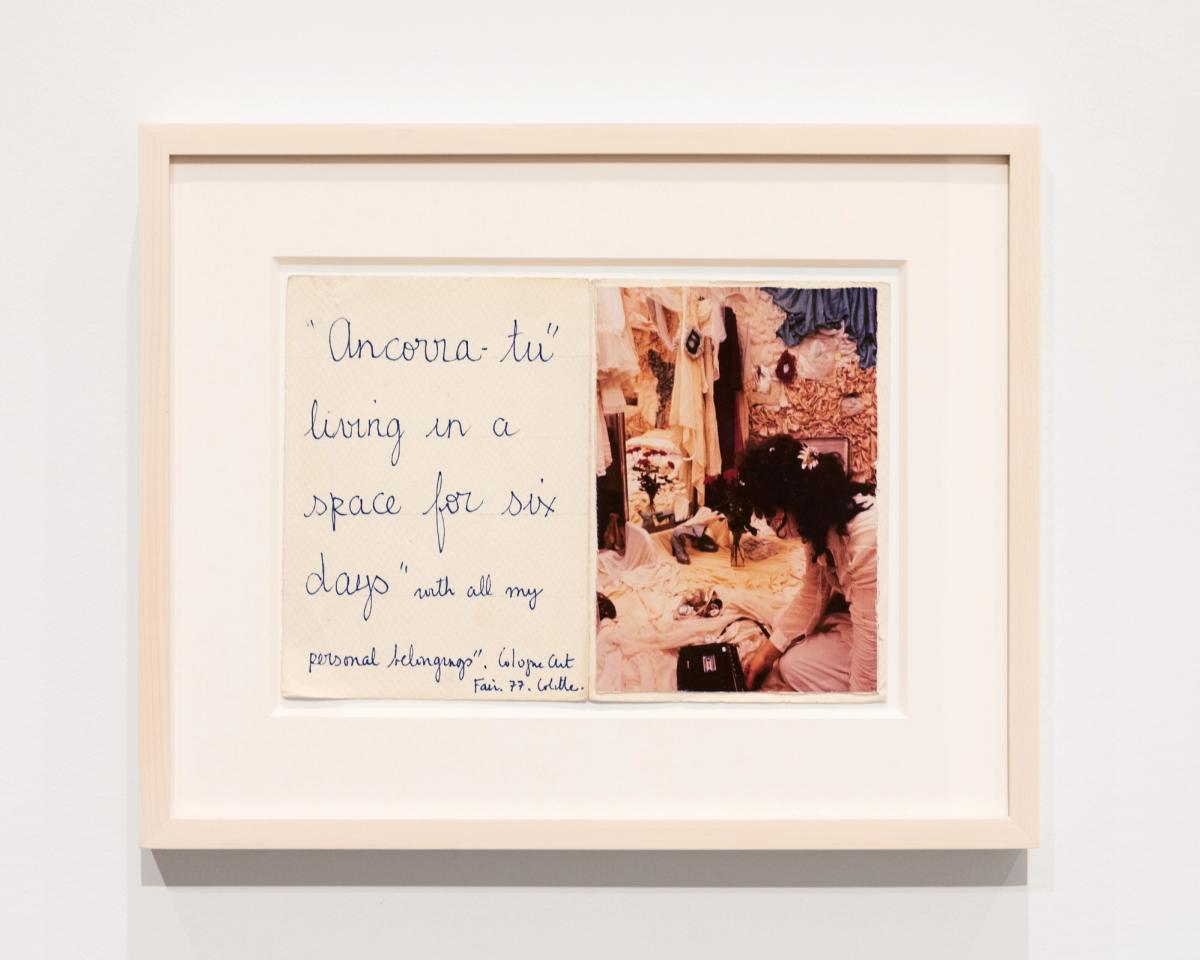
Colette Lumiere
Ancorra tu, Cologne Art Fair (Postcards of the Story of My Life),
1977
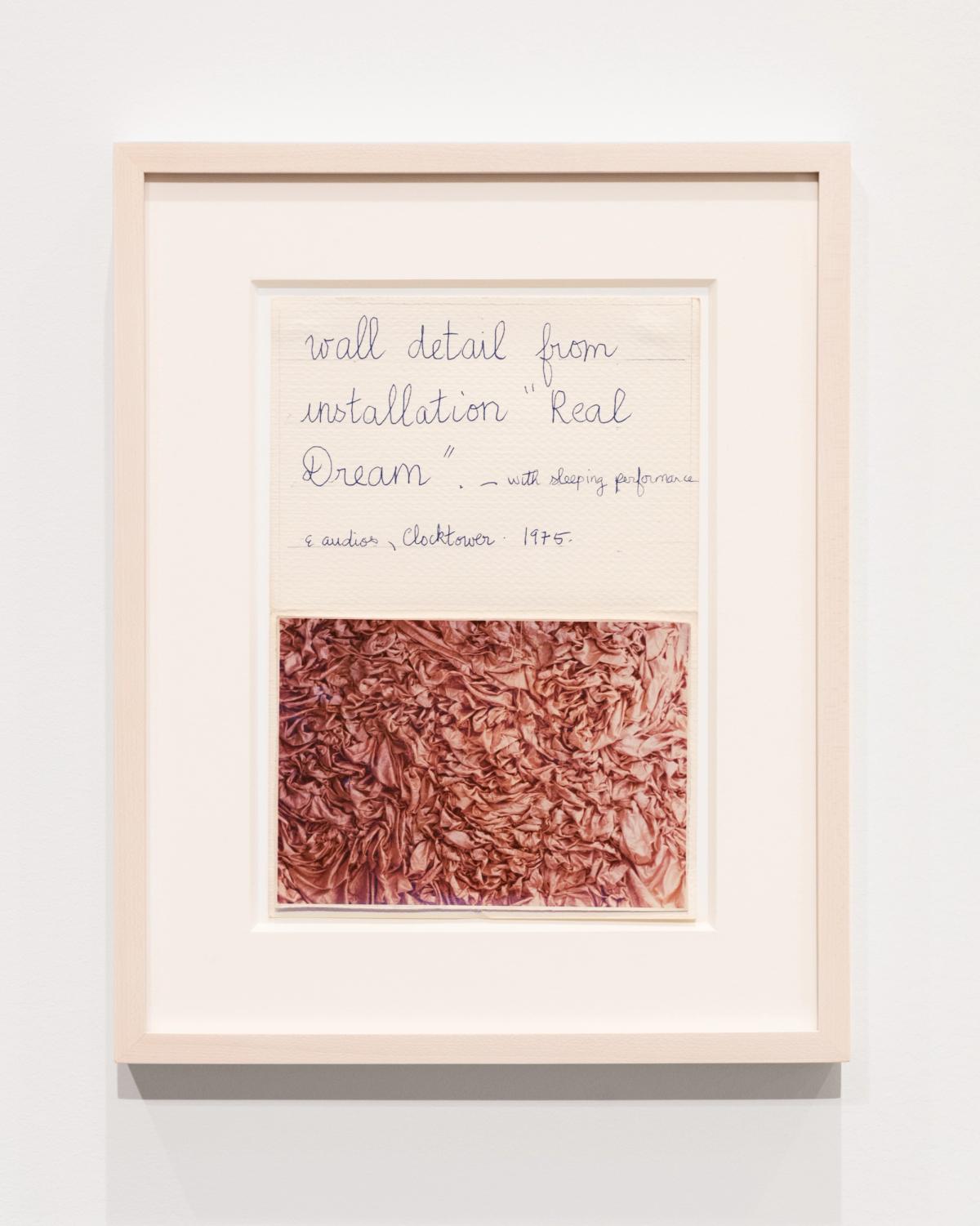
Colette Lumiere
Real Dream / Clocktower Gallery (Postcards of The Story of My Life),
1975 - 1976
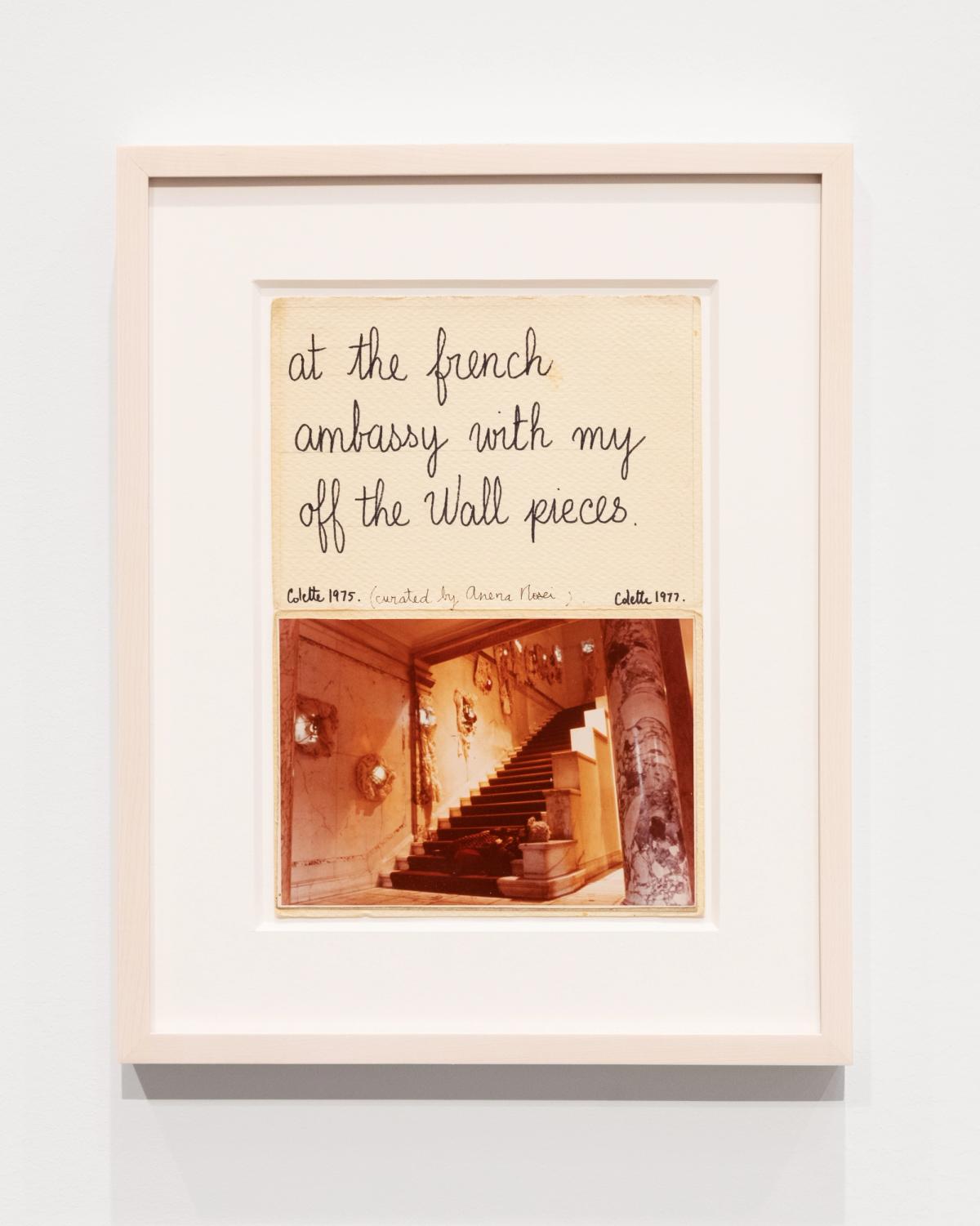
Colette Lumiere
Off the Wall / French Consulate, New York (Postcards of The Story of My Life),
1975-1977
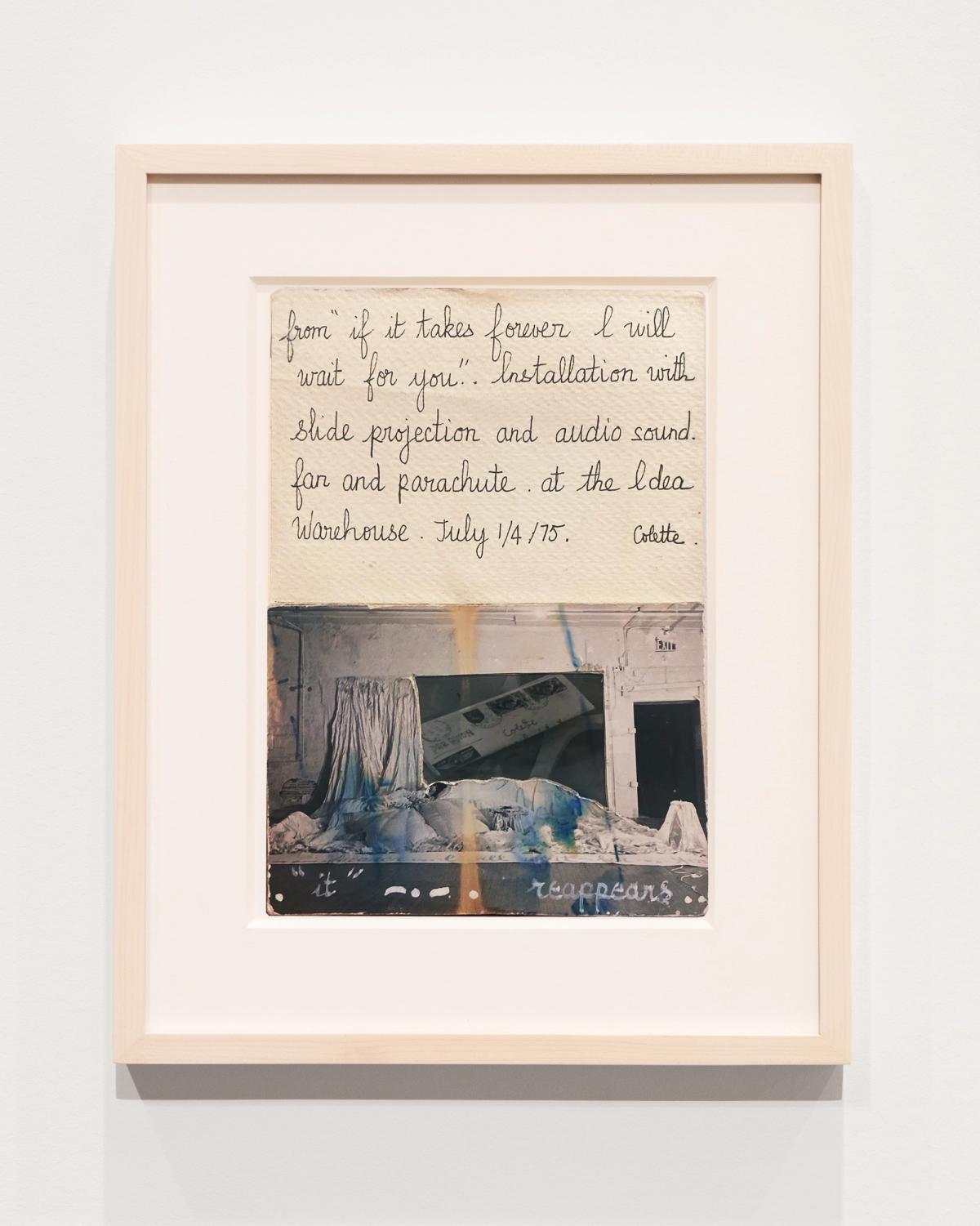
Colette Lumiere
Untitled (Postcards of the Story of My Life),
1975